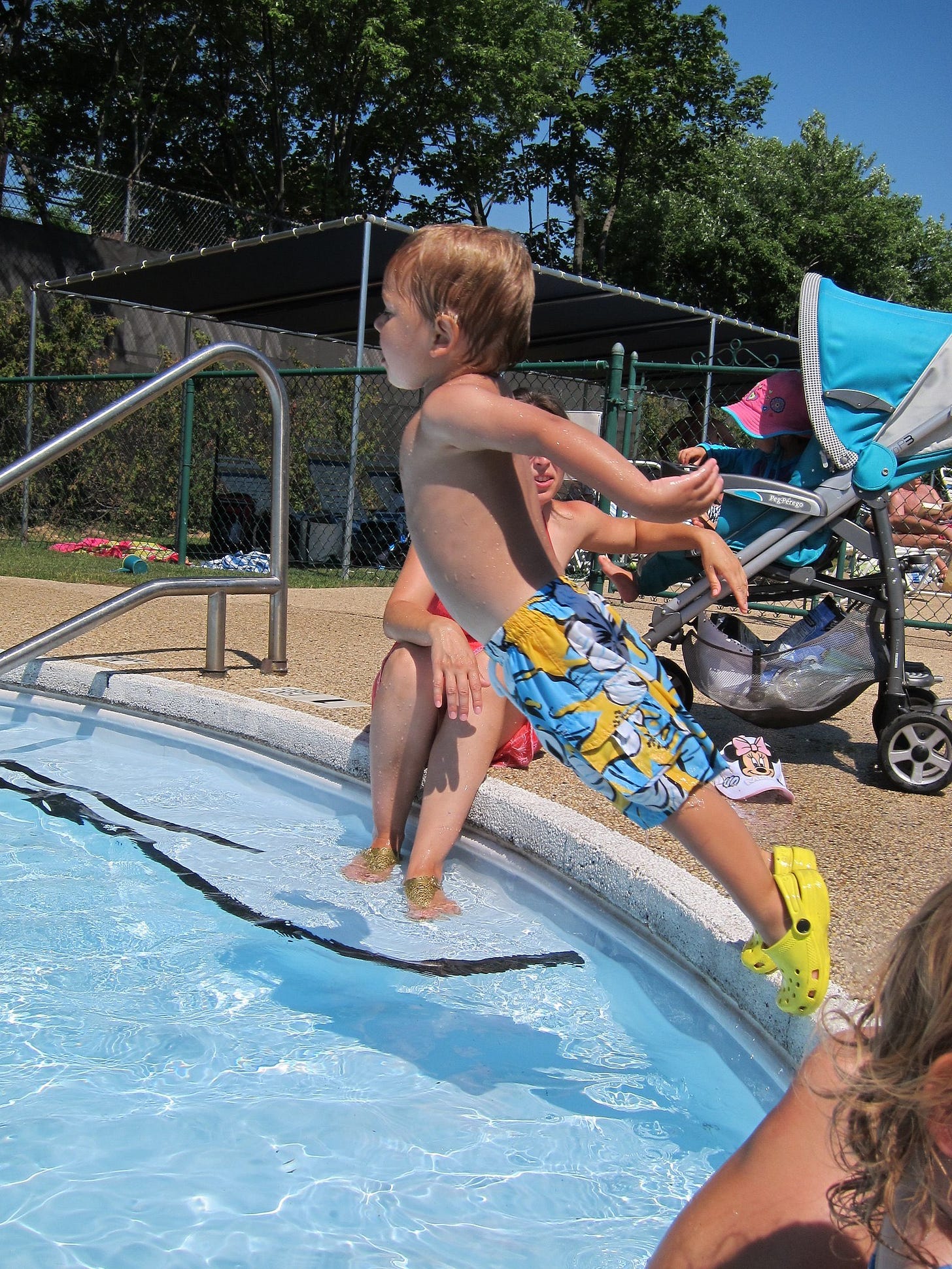Temper mental

Life is a come-as-you-are proposition, it seems the science these days is telling us. Nature has the upper hand in the nature-nurture debate over influence. While parenting may matter to some extent, the effects of the temperament we are born with shine through, right from the beginning.
Psychologist and professor Gina Mireault describes parents and babies interacting at a public pool, and reviews the science for Aeon in her essay Born That Way. Some of the earliest research on infant temperament was performed by Alexander Thomas and Stella Chess in the 1950s, who observed babies’ behaviors and rated them along nine dimensions, including activity levels, routine regularity, sensitivity to stimuli, mood, attention span, and so on. They came up with three major trait groupings that accounted for around two-thirds of babies they observed: easy, slow-to-warm-up, and difficult, from most to least common.
The 40 percent of babies who were rated easy, as you might expect, were generally content, not too bothered by changes in their surroundings, and adapted quickly to new routines. The 10 percent of babies who were difficult were generally cranky or fearful, and responded thus to new stimuli and changes in their routines; they were difficult to soothe. The 15 percent slow-to-warm-up types were likely to be initially unhappy about changes, but would eventually come around, as if they were vigilant in general, lest circumstances get out of control. (There were other trait combinations that were described but harder to generalize.)
As these early researchers and their successors tracked the babies’ development over the years, they found the traits to be fairly stable. Through their personalities, babies could cause changes in the behavior of parents and caregivers who adapted to the babies’ temperaments. Difficult and slow-to-warm babies, for instance, would cause their parents to spend more time helping them by interacting with them, attempting to ease their worried fretting or their angry responses. Says Mireault:
Thomas and Chess, working with colleagues who progressed their original study, showed that neonates, sometimes just hours old, begin to inadvertently affect the physical and social environment by adapting, resisting, observing, reacting or ignoring it in ways nudged by their biological temperament, and that parents, siblings and other close people change the environment and/or their own behaviours in response. In other words, the environment and the baby have a dynamic bidirectional relationship from the very beginning, changing in response to each other. What’s more, this influence means that babies play a major role in their own development.
The ongoing research over time has supported the earlier studies and helped refine our understanding. Temperament appears not only scientifically valid, but also possibly stronger than the best efforts at parenting to correct perceived shortcomings:
Hundreds of studies have subsequently and unequivocally demonstrated that temperament is a driving factor in child development that is at least as important as everything that comes after a baby enters the world, including parenting.
Research into neurochemistry has found support for such tendencies—even in other mammals, interestingly enough.
At any rate, whether as the parents or the children of others, we might have less ability to affect others’ development, or to be affected by others’ attempts to shape us, than we might hope or wish for.



Today's special animal friend is the Belted Kingfisher, Megaceryle alcyon. This bird is found year-round through most of the United States. Migratory populations breed in Canada and overwinter in Mexico or on the Gulf coast of South America. They are a species of Least Concern.
Belted kingfishers are 11 to 14 inches high with a wingspan around 22 inches. Females are slightly larger than males. Males have a dark blue head, back, and wings. Females are slate gray, but they have reddish bands on their chest and sides, while males have a gray band; this is the "belted" part of their name. Both sexes have a stocky body and a large head with a long, pointed beak for snapping fish from the water.
https://www.youtube.com/watch?v=X8djL-Z-WJI
Belted kingfishers eat fish, crustaceans, insects, reptiles and amphibians, and some small mammals. They perch on trees, fences, or bushes near bodies of water and dive headfirst to catch prey. The shape of their heads is adapted to making a clean dive which deceives the prey animal until Snap! The design of kingfishers' heads inspired the designers of Japan's bullet trains, aiding them in streamlining the front of the train to avoid sonic booms in tunnels.
These birds are solitary during most of the year. Breeding pairs are monogamous for the season. The male courts the female by bringing her food, and both sexes defend their breeding territory with fierce posturing, wing-flapping, and shrieks.
https://www.youtube.com/watch?v=eywwbaFy6XM
Kingfishers make nests in pond or stream banks, excavating an upward-sloping tunnel and placing the nest above possible rising water. Males do the majority of the digging work, which may take up to three weeks. The female lays 5 to 8 eggs, which both parents help to incubate for 22-44 days. The nestlings are fledged in about a month. In some habitats, a pair can hatch two nests in a season.
Habitat loss is the main cause of declining – though not drastically declining – populations of belted kingfishers. They need a particular arrangement of clear water with limited vegetation, nearby trees or shrubbery, and vertical stream or pond banks for their feeding and nesting practices. They have been observed feeding from backyard ornamental fish ponds.
Here's a longer video with lovely views, for the good of everyone's mental health:
https://www.youtube.com/watch?v=2yIMik4CTX8
Good morning.